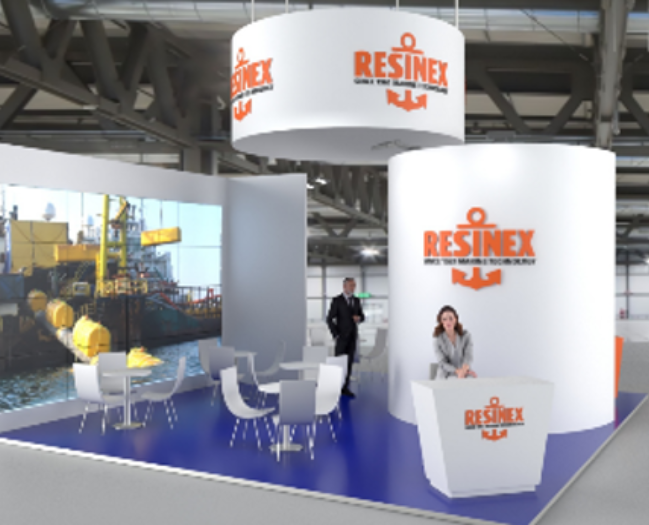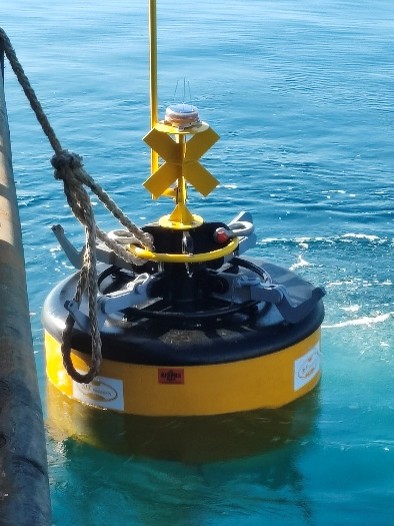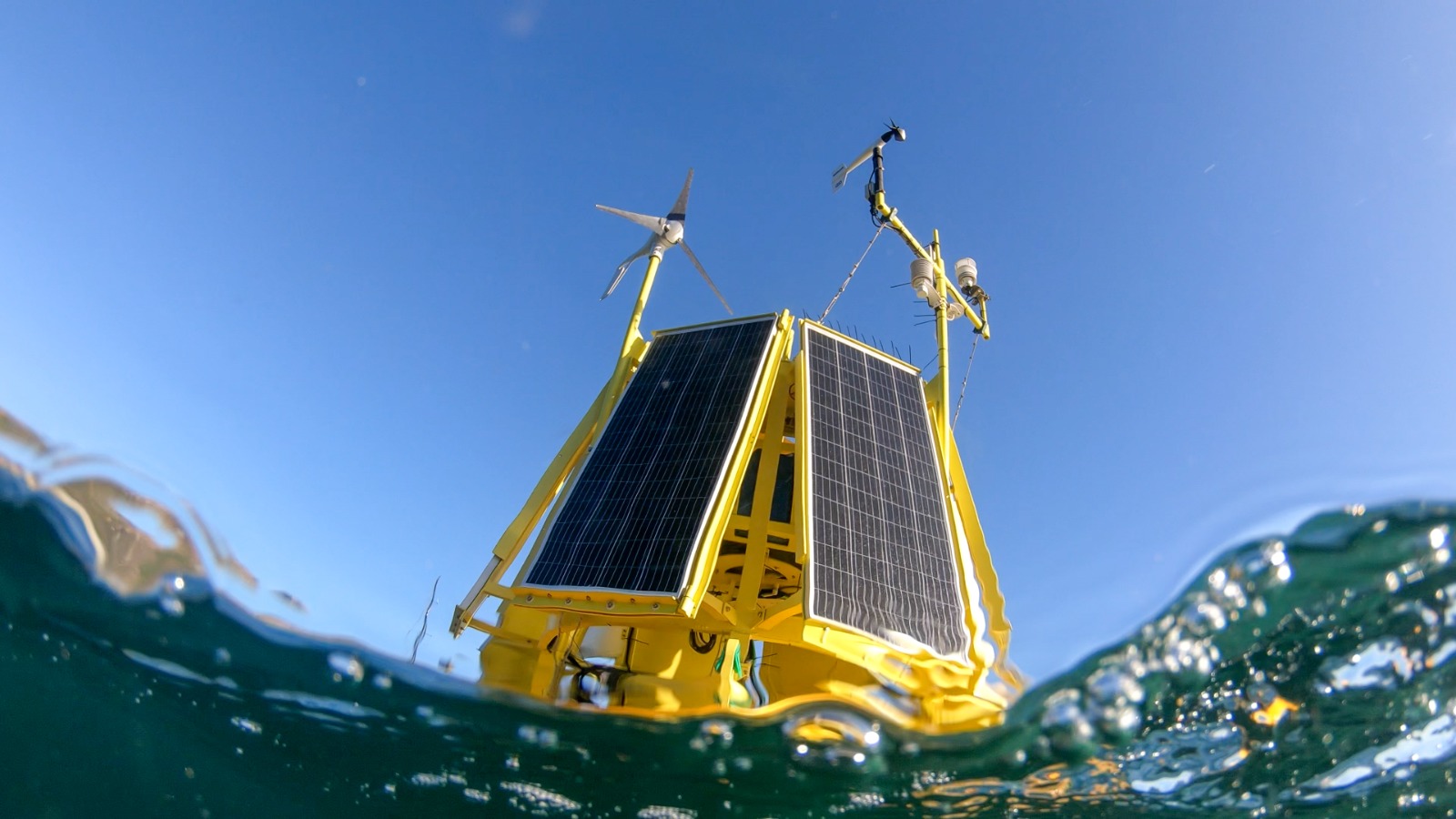THE MOST VERSATILE ELASTIC BEACONS IN THE WORLD BY RESINEX
Resinex elastic beacons have endless capacities and potentialities in terms of adaptability and resistance. They don’t know any limit on length, weight, diameter, equipment, dimension and buoyancy of the float. All is ad hoc projected according to the customer’s needs. We consider our elastic beacons eclectic, as they can be used for different purposes: signalization, delimitation, support for monitoring instruments, anti-intrusion control and also in various marine weather conditions and water depths, such as for the recent projects of Kigam (South Korean West Coast), Abu Dhabi, Abu Qir, Romania, Portofino, Stromboli, Gaeta and Pozzuoli. The quality of the Resinex elastic beacons is ensured by the great success in many different locations all around the world, in the most diversified marine weather and morphological conditions.
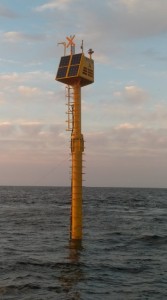
In 2017 Resinex repeats with the production of 3 other maxi monitoring beacons destined for the west coast (Yellow Sea)
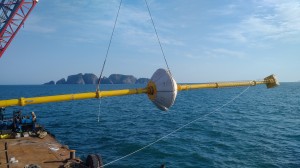
Elastic beacon composed of a 4.3 meter diameter float, 2.5 meters high and 16 ton net buoyancy, with a double truncated cone shape to withstand extreme marine conditions.
South Korea: high reliability in extreme conditions
Resinex has accepted the challenge to supply elastic beacons which withstand extreme meteorological marine conditions. After the supply of 3 instrumental elastic beacons in 2015, installed in the South Korean eastern coast, in 2017 Resinex has replayed with the manufacturing of further 3 big elastic beacons for monitoring, destined to the western coast (Yellow Sea). The South Korean western coast is known to be subject to extreme tides and typhoons. Kigam (The Korean Institute for Geoscience and Mineral Resources) contacted Resinex to have the best support for the geophysical research and monitoring activities. During the initial phase of the project, Resinex technical department received from Kigam real information about the meteorogical marine conditions during a typhoon: wave height 11.2 m, wind speed 180 km/h, current speed 4 knots. Once completed the framework of the technical information, Resinex has ad hoc studied and projected three instrumental elastic beacons with peculiar characteristics. Two types of innovative software have been utilized: Orcaflex and Resinex Tethered Buoy System, specifically developed for Resinex from the Politecnico of Milan. The Tethere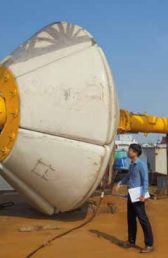 d Buoy model of the Politecnico of Milan, has been expressly studied for the simulation of the behaviour of the Resinex elastic beacons in the sea. Orcaflex model has been adjusted by Resinex technical team to the analysis of the elastic beacons and can be applied on any type of elastic beacon, in any location and with any marine weather conditions. It allows to display in “real time” the global behaviour of the floating system in 2D and 3D. Moreover, it consents, as the Tethered Buoy model, to extrapolate and analyse any variable in time and space (from the elastic beacon inclination, to the hose structural stresses, to the forces generated from the beacon on the anchorage point…). The intersection of the data coming from the two software programmes of simulation, has allowed to identify the best solution for the given parameters. Then, ad hoc elastic beacons have been projected, able to prove the best performances even in adverse meteorological marine conditions. Then the production of elastic beacons started…. With a float of 4.3 m of diameter, 2.5 m of height and 16 tonnes of net buoyancy, a double truncated cone shape to resist the extreme marine weather conditions. Beacons have an average height of 51 m, a focal plane of 14 m to keep the visibility against high tide variations and have been realized for depths of 34.5 m, 34.6 m and 35.5 m. They are also complete of a big upper platform on which the necessary instruments for the monitoring are applied. The installation in the Yellow Sea has been locally supervised by Resinex technicians.
d Buoy model of the Politecnico of Milan, has been expressly studied for the simulation of the behaviour of the Resinex elastic beacons in the sea. Orcaflex model has been adjusted by Resinex technical team to the analysis of the elastic beacons and can be applied on any type of elastic beacon, in any location and with any marine weather conditions. It allows to display in “real time” the global behaviour of the floating system in 2D and 3D. Moreover, it consents, as the Tethered Buoy model, to extrapolate and analyse any variable in time and space (from the elastic beacon inclination, to the hose structural stresses, to the forces generated from the beacon on the anchorage point…). The intersection of the data coming from the two software programmes of simulation, has allowed to identify the best solution for the given parameters. Then, ad hoc elastic beacons have been projected, able to prove the best performances even in adverse meteorological marine conditions. Then the production of elastic beacons started…. With a float of 4.3 m of diameter, 2.5 m of height and 16 tonnes of net buoyancy, a double truncated cone shape to resist the extreme marine weather conditions. Beacons have an average height of 51 m, a focal plane of 14 m to keep the visibility against high tide variations and have been realized for depths of 34.5 m, 34.6 m and 35.5 m. They are also complete of a big upper platform on which the necessary instruments for the monitoring are applied. The installation in the Yellow Sea has been locally supervised by Resinex technicians.
Signalling shallow water in Abu Dhabi 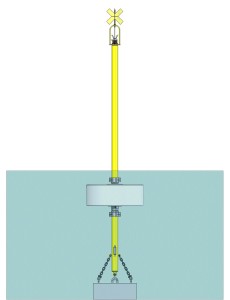
To signal a dredged access canal to the harbour and the dredged areas of two small landings adjacent to two artificial islands, 18 Resinex elastic beacons, 1 land beacon and 8 light buoys have been purchased and installed by a European company in the Al Dabb’iya area of Abu Dhabi.
The peculiarity of this area is the shallow water: the depth is only 4.4 metres. For this reason, Resinex has studied a solution that can maintain, even in shallow water, the functionality of the elastic beacons which are usually made for medium / high depths, without renouncing the features that make them safe and highly performing. Therefore light elastic beacons have been designed, they are without turret, with a Pem 21 float with a great buoyancy but short and wide (diameter 2100 x 800 mm), to ensure high stability even at low depths. The light buoys with a diameter of 1800 mm, were instead used to signal the dredging channel between the two docks. Resinex represents the world-class excellence of complete marine signalling kit in any morphological condition.
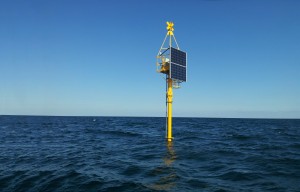
GeoEcoMar (Romania) requested a Resinex instrumental elastic beacon for the largest regional early warning system initiative for marine geological hazards on the west coast of the Black Sea
Instrumental elastic beacon to monitor the marine natural hazards in the Black Sea GeoEcoMar (Romania) has requested Resinex an instrumental elastic beacon for its first major initiative related to a regional early-warning system for marine geohazards of risk to the western Black Sea coastal area. The elastic beacon is composed of a steel structure supported by a big sub-surface float rotationally moulded in linear polyethylene and filled with high density polyurethane foam. The elastic beacon, with a focal plan of 6 mm and anchored to the sea bottom at 15 m depth, is equipped with a walkable turret which has places for solar panels, batteries and stainless steel pipe for instrumentation cable from turret to bottom.Moreover, the elastic beacon is equipped with a walkable turret which has places for solar panels and batteries and stainless steel pipe for instrumentation cable from turret to bottom. Since June 2013, the early-warning system is managed by two National Data Centres from Romania (GeoEcoMar, Constanţa Branch) and Bulgaria (IO-BAS HQ, Varna). The real-time, automatic deep-sea gauge has two modules, involving sea stations and on-shore coordination centers (one center for each country). The need to kickstart this activity came from the proven vulnerability of the Black Sea area to the natural extreme events, such as earthquakes, submarine landslides, extreme storms, some of them with a high tsunamigenic risk. The Black Sea Security System is an integrated multi-parameter system that provides long time series of physical and bio-chemical data, regarding the properties of the water masses (temperature, pressure, conductivity, dissolved O2, chlorophyll, turbidity, water current direction and amplitude, etc.) and local meteorological parameters (air temperature, air pressure, humidity, wind direction and speed, precipitation).
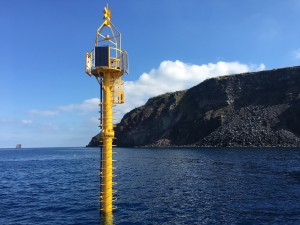
In 2017 the Department of Earth Sciences of Florence requested the supply of a second Resinex elastic beacon for monitoring the Sciara del Fuoco
A second elastic beacon for Stromboli
In 2017 the Department of Earth Science of the University of Florence, required a second Resinex elastic beacon to monitor the Sciara del Fuoco, the zone of the submerged side of the Stromboli volcano. The first supply of the instrumental elastic beacon went back to summer 2008, as a mere experimental proposal for the analysis of the activity of the monitoring of the stability of the active side of the volcano, which following the effusive eruption in December 2002, it poured in the sea around 20 million cubic metre, causing an abnormal tsunami wave of 10 metre of height, which reached the Siciliy coasts and the Calabria coasts damaging the port of Milazzo and other areas of the Eolie Islands. The experimental phase with the first elastic beacon has met with success and above all, it has represented a turning point for the monitoring of the stability of the active side of the volcano. Through the instrumentations applied on the beacon, it is possible to provide in real time the parameters of the control of the beacon, the inclination, the height above sea level and the geographical position. Moreover, all the parameters for the meteo-marine characterisation (significant height, wave period, wave movement direction, sea status, water temperature) and the potential tsunami waves produced by the landslide in the water of the emerged and submerged portions of the Sciara del Fuoco. The second Resinex elastic beacon was installed in October 2017 on the other side of the Sciara to have a complete monitoring of the stability grade of the volcano. The two elastic beacons have the main purpose of being “sentinels” and will have the task to automatically transmit and in real time the final alert in case of tsunami. The two elastic beacons are thus the cornerstone of the system of Early-Warning of anti-tsunami for the southern Tyrrhenian sea.
Resinex elastic beacons for the enlargement of Gaeta Port 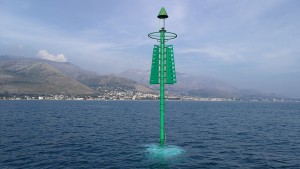
In the port of Gaeta, where important works of renovation and enlargement of the commercial dock have been made recently; three Resinex elastic beacons were installed in October 2017, to signal the dredged canal, which reaches now 12 metres of depth. The three elastic beacons were deployed in less than 10 hours with the supervision of the Resinex staff.
Elastic beacons for signalling the methan gas pipelines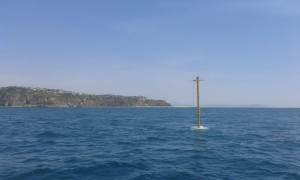
From Bacoli, near Naples, to Procida Island, in 2017 works were carried out to secure the underwater methan gas pipelines, using two Resinex elastic beacons. The first beacon has been realized for a depth of 15,5 m, while the second one for 28,5 m.
Signalization is composed of a top mark complete of radar reflector and of a self powered marine lantern with a range of 5 NM. They have a focal plane of 5 m and are equipped with man guard and ladders to reach the upper part. They are anchored to the seabed with a concrete sinker of 10 tonnes. Installation was completed in June 2017.

